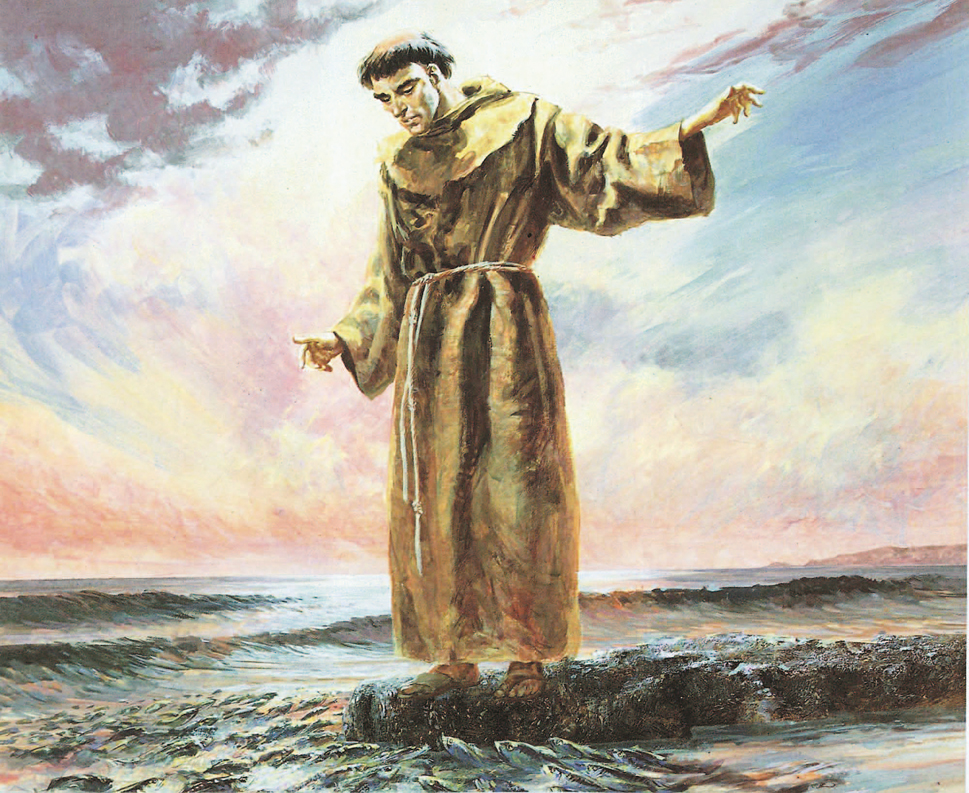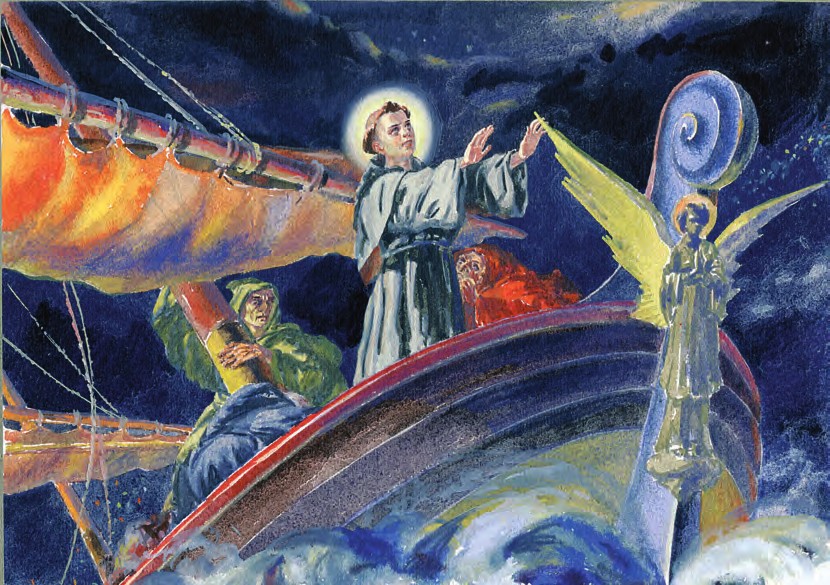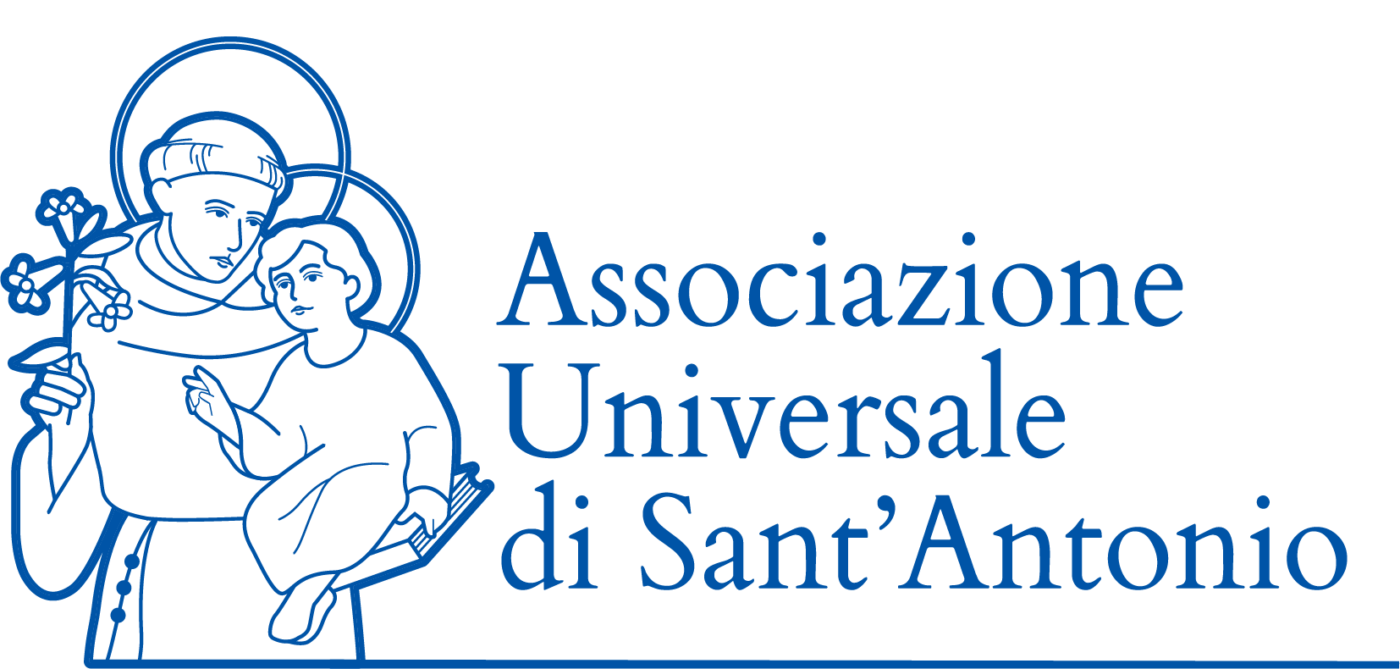Honestly I do not know whether the Saint was referred to as “the Saint of miracles” even before the magazine was launched but we know that it applies to St. Anthony of Padua better than the Greek word “thaumaturge”, which has the same meaning (worker of wanders), and refers also to other saints. Instead no other saint, except St. Anthony of Padua, is called “The Saint of miracles”. Was he really so?
The answer to this question is very important. In fact, the wide spread and long lasting devotion to St. Anthony of Padua can not be explained in any better way than by his well-known thaumaturgy, the power to intercede with God in our favour and to perform miracles.
Very often near the altars dedicated to St. Anthony in our churches the ex-voto catch our eyes: now they are almost little silver hearts or made of other metal while in the past they were votive tablets or other symbolic tokens. Often they bear the name of the devotee who offered and the words “for favours received” or their initials.
They are not exactly miracles, even though out of enthusiasm those words are used. The word “favour”, in our case, has a wider meaning than the word miracle. It means any divine favour or benefit. Instead St. Thomas Aquinas said that the miracles the Lord performs are beyond the order of all created nature. Not only favours but also true miracles have been attributed to St. Anthony’s intercession.
The first sudden and unexpected manifestation of St. Anthony’s miracles took place Tuesday 17 June 1231 when his body was taken from the little convent in Arcella to the church of Santa Maria Mater Domini where the Saint had chosen to be buried and where the splendid basilica was later built. The description closest to that thaumaturgic event was written by a contemporary of the event in St. Anthony’s first life, the “Assidua” for his contemporaries, many of them had been witnesses. The following is a translation from Latin. “On the same very day many people affected by the most different diseases were taken there and they recovered their health at once thanks to Anthony. On touching the tomb a sick person was healed. And those who could not touch it, owing to the large number of people, if they were taken to the square before the entrance to the church they recovered their health under everybody’s eyes. They were the blind, deaf and dumb and lame, paralytics, humpbacks, sufferers from gout and plague victims of all kinds”.
Also the “vita secunda” that was written a few years later by the German Franciscan Giuliano da Spira (who died in 1250) reported these thaumaturgic events that had taken place on the day when the people of Padua together decided to bury Anthony in the place he wished. Before writing the “second life” he, on behalf of his superiors, wrote the so-called “rhythmical office of St Anthony” which some of the Franciscan Order still use on St. Anthony’ Day. It is an historical-poetic praise of the Saint’s great deeds made up of antiphonies, hymns and responsorials. One of them is the well-known “Si quaeris miracula” which the Saint’s devotees say in order to find lost things.
The Latin text: Si queries miracula, mors, error, calamitas, daemon,lepra fugiunt, aegri surgunt sani. Cedunt mare, vincula, membra resque perditas, petunt et accipiunt iuvenes et cani. Pereunt pericula cessat et necessitas. Narrent hi, qui sentium , dicant Paduani. Cedunt mare, etc. Gloria Patri et Filio et Spiritui Sancto.
The English translation:
If you ask for miracles, death, error, or calamities, leprosy and demons fly, and death succeeds infirmities.
The sea obeys and fetters break, and lifeless limbs you do restore; white treasures lost are found again when young and old your aid implore...
Undoubtedly the author was thinking of the “Assidua”, the third and last part of which consisted in a list of 53 miracles. If they are not all, they are most of the miracles that were examined and confirmed by the ecclesiastic law court Bishop Giacomo Corrado set up in Padua. Among the judges there were the Blessed Giovanni Forzaté, the prior of the monastery of the White Benedictine monks of St. Benedict and the Blessed Giovanni da Vicenza or da Schio, the prior of the St. Augustine monastery and a well-known preacher of peace. That list was taken to Rome, to Pope Gregory IX, by a delegation sent by the Bishop and the town of Padua asking for the canonization of Anthony. Canonization by the Pope took place only when a special commission had re-examined the list and approved of it.
Already in the XIII century, St. Anthony’s century, the fame of his powerful intercession and thaumaturgic virtue, based on the reality of miracles that had been officially recognized, was solidly established. We could wonder why this exceptional thaumaturgic charisma and the following exceptional popular devotion were revealed in St. Anthony and not in St. Francis of Assisi (1226) or St. Bonaventura (1274) who were much more important, the former for starting and the latter for developing the Franciscan Order. Not even the Church that, on the grounds of miracles, officially admitted that her son had overcome the borders of heroic sanctity has ever thought of judging whether he overcame them more or less so than other saints. Only God can make this classification.
Hence this “phenomenon” can be explained looking in the historic reality of the Saint’s miracles that made him deserve to be called the “Saint of miracles” but it must soon be added that this charisma can be explained by looking in “that order conceived by the mind of God in order to direct created things towards their aim” (Dictionary of Dogmatic Theology), that is Divine Providence.




 Italiano
Italiano Français
Français